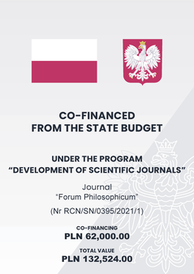- Home »
- Issues »
- 17/1 - Spring 2012 »
- Articles »
Mortal Body, Immortal Mind
Does the Brain Really Produce Consciousness?
Abstract
Neuroscientists keep telling us that the brain produces consciousness and consciousness does not survive brain death because it ceases when brain activity ceases. Research findings on near-death-experiences during cardiac arrest contradict this widely held conviction. They raise perplexing questions with regard to our current understanding of the relationship between consciousness and brain functions. Reports on veridical perceptions during out-of-body experiences suggest that consciousness may be experienced independently of a functioning brain and that self-consciousness may continue even after the termination of brain activity. Data on studies of near-death-experiences could be an incentive to develop alternative theories of the body-mind relation as seen in contemporary neuroscience.
Keywords
Cite this article
Goller, Hans. “Mortal Body, Immortal Mind: Does the Brain Really Produce Consciousness?” Forum Philosophicum 17, no. 1 (2012): 5–26. doi:10.35765/forphil.2012.1701.01.
Bibliography
Beauregard, Mario, and Denyse O’Leary. The Spiritual Brain: A Neuroscientist’s Case for the Existence of the Soul. New York: HarperOne, 2007. Chalmers, David J. The Conscious Mind: In Search of a Fundamental Theory. New York; Oxford: Oxford University Press, 1996. Ewald, Günter. Auf den Spuren der Nahtoderfahrungen: Gibt es eine unsterbliche Seele? Kevelaer: Butzon & Bercker, 2011. Fenwick, Peter. “Science and Spirituality: A Challenge for the 21st Century. The Bruce Greyson Lecture from the International Association for near-Death Studies 2004 Annual Conference.” Last updated April 03, 2007. http://iands.org/research/important-research-articles/42-dr-peter-fenwick-md-science-and-spirituality.html Fenwick, Peter, and Elizabeth Fenwick. The Truth in the Light: Investigation of over 300 Near Death Experiences. New York: Headline Book Publishing, 1996. Goller, Hans. Das Rätsel von Körper und Geist: Eine philosophische Deutung. Darmstadt: Primus, 2003; Darmstadt: Wissenschaftliche Buchgesellschaft, 2007, 2011. Goller, Hans. “Are Near-death Experiences Evidence for the Existence of the Soul?” In Soul: A Comparative Approach, edited by Christian Kanzian and Muhammad Legenhausen, 63–84. Heusenstamm: Ontos, 2010. Greyson, Bruce. “The Near-Death Experience Scale: Construction, Reliability, and Validity.” Journal of Nervous and Mental Disease 171, no. 6 (1983): 369–375. Knoblauch, Hubert. Berichte aus dem Jenseits: Mythos und Realität der Nahtod-Erfahrung. Freiburg: Herder, 2002. Knoblauch, Hubert, and Hans-Georg Soeffner, eds. Todesnähe: Wissenschaftliche Zugänge zu einem außergewöhnlichen Phänomen. Konstanz: Universitätsverlag Konstanz, 1999. Lommel, Pim van. Consciousness Beyond Life. The Science of the Near-Death Experience. New York: HarperOne, 2010. Lommel, Pim van. “Near-Death Experience, Consciousness, and the Brain: A New Concept About the Continuity of Our Consciousness Based on Recent Scientific Research on Near-Death Experience in Survivors of Cardiac Arrest.” World Futures: The Journal of General Evolution 62, no. 1/2 (2006): 134–151. Lommel, Pim van, Ruud van Wees, Vincent Meyers, and Ingrid Elfferich. “Near-Death Experience in Survivors of Cardiac Arrest: A Prospective Study in the Netherlands.” Lancet 358, no. 9298 (2001): 2039–2045, doi:10.1016/S0140-6736(01)07100-8. Mobbs, Dean and Caroline Watt. “There is Nothing Paranormal about Near-Death Experiences: How Neuroscience Can Explain Seeing Bright Lights, Meeting the Dead, or Being Convinced You Are One of Them.” Trends in Cognitive Sciences 15, no. 10 (2011): 447–449, doi:10.1016/j.tics.2011.07.010. Moody, Raymond A. The Light Beyond: The Extraordinary Sequel to the Classic Bestseller Life after Life. London: Rider, 2005. Moody, Raymond A. Life after Life: The Investigation of a Phenomenon—Survival of Bodily Death. Harrisburg, PA: Stackpole Books, 1976. Noë, Alva. Out of Our Heads: Why You Are Not Your Brain, and Other Lessons from the Biology of Consciousness. New York: Hill and Wang, 2009. Parnia, Sam. What Happens When We Die: A Groundbreaking Study into the Nature of Life and Death. Carlsbad, CA: Hay House, 2008. Parnia, Sam, and Peter Fenwick. “Near Death Experiences in Cardiac Arrest: Visions of a Dying Brain or Visions of a New Science of Consciousness.” Resuscitation 52, no. 1 (2002): 5–11. Ring, Kenneth, and Evelyn E. Valarino. Lessons from the Light: What We Can Learn from the Near-Death Experience. Needham, MA: Moment Point Press, 2006. Sabom, Michael. Light and Death: One Doctor’s Fascinating Account of Near-Death Experiences. Grand Rapids, MI: Zondervan, 1998. Sabom, Michael. Recollections of Death: A Medical Investigation. New York: Harper and Row, 1982. Schröter-Kunhardt, Michael. “Nah-Todeserfahrungen aus psychiatrisch-neurologischer Sicht.” In Todesnähe: Wissenschaftliche Zugänge zu einem außergewöhnlichen Phänomen, edited by Hubert Knoblauch, and Hans-Georg Soeffner, 65–99. Konstanz: Universitätsverlag Konstanz, 1999. Woerlee, Gerald M. “Grenzerfahrungen auf dem Operationstisch: Wie wenig wir über uns Selbst und über die Funktionsweise unseres Körpers wissen.” Last modified Noveber 11, 2005. http://www.heise.de/tp/r4/artikel/21/21392/1.html. Woerlee, Gerald M. Mortal Minds: The Biology of Near-Death Experiences. Amherst; New York: Prometheus, 2005.




